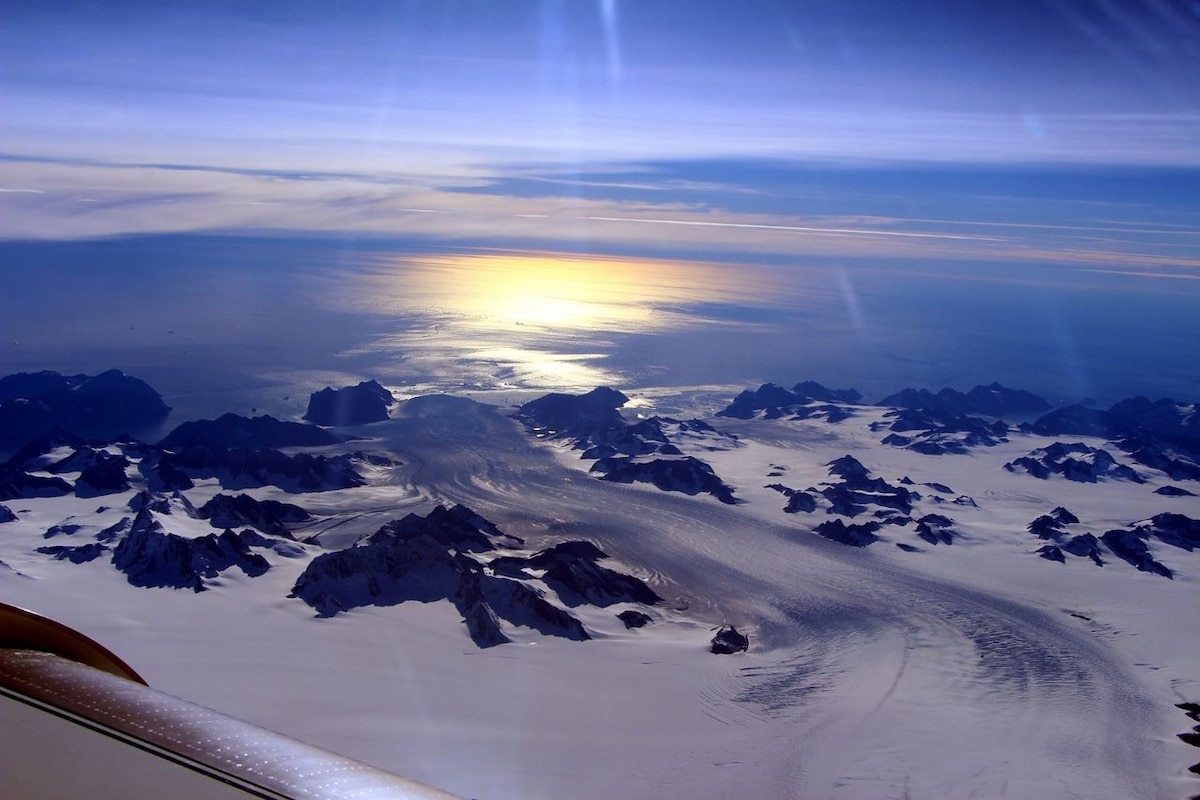Formerly Stable Greenland Glacier Shows Signs of Rapid Retreat

 Why you can trust us
Why you can trust us
Founded in 2005 as an Ohio-based environmental newspaper, EcoWatch is a digital platform dedicated to publishing quality, science-based content on environmental issues, causes, and solutions.
Once upon a time, the Steenstrup Glacier, located in northwestern Greenland, was one of the most stable glaciers in the country. But new research shows this ice formation is now in the top 10% of glaciers contributing to all ice melt in the entire region.
From 2018 to 2021, the glacier retreated a whopping 5 miles, a rare and considerable amount of change. The formation thinned by about 20% and contributed double its usual ice discharge into the ocean, according to a new study by researchers at Ohio State University. The study was published in Nature Communications.
Steenstrup Glacier is located in shallower waters and is more isolated than other glaciers in the area, which is why experts believed it was largely unaffected by rising temperatures, even as other Greenland glaciers were seeing huge declines.
“Our current working hypothesis is that ocean temperatures have forced this retreat,” Thomas Chudley, lead author of the study, said in a statement. “The fact that the glacier’s velocity has quadrupled in just a few years opens up new questions about how fast large ice masses can really respond to climate change.”
Ocean temperatures are on the rise. The former highest recorded ocean surface temperature was 20.0°C in 2016 and was recently topped by a 21.1°C average recorded in early April of this year. As temperatures increase, scientists are concerned for these glaciers, especially as a glacier like Steenstrup that was previously stable is now retreating and discharging ice at unprecedented rates.
“A quadrupling in speed within 5 years is, to our knowledge, unprecedented among the relative accelerations of large Greenland glaciers, including the doubling of velocity over 5 years of Sermeq Kujalleq in the early 2000s,” the authors wrote in the study. “The short-term doubling of ice discharge is likewise unprecedented and only exceeded by Harald Moltke Bræ, which ~tripled its annual ice discharge within the span of a decade.”
Greenland is especially sensitive to warming. According to the University Corporation for Atmospheric Research, the average temperature increase globally was 1°F over the past century, while in Greenland, average air temperatures have increased by around 7°F since the 1990s. Greenland loses around 234 billion tons of ice per year, meaning more ice is melting in Greenland than forming each year.
The retreat and ice discharge of Greenland’s ice formations can contribute to rising sea levels, posing risks to coastal communities without swift action to curb rising ocean temperatures. The researchers noted that more observation for the Steenstrup Glacier is important, but the findings of its unprecedented retreat are also a warning for scientists to study what is occurring for similar glaciers and how it could impact sea level rise in the future.
“What’s happening in Greenland right now is kind of the canary in the coal mine of what might happen in West Antarctica over the next few centuries,” Chudley said. “So it would be great to be able to get into the fjord with real on-the-ground observations and see how and why Steenstrup has changed.”
Subscribe to get exclusive updates in our daily newsletter!
By signing up, you agree to the Terms of Use and Privacy Policy & to receive electronic communications from EcoWatch Media Group, which may include marketing promotions, advertisements and sponsored content.

 233k
233k  41k
41k  Subscribe
Subscribe 




